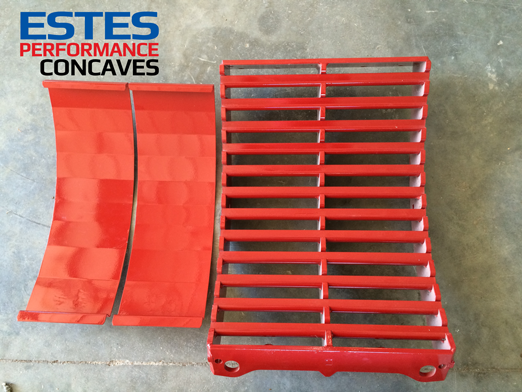A combine concave plays an important role in the quality of the harvested crop, both in threshing and separating. The threshing involved freeing the seeds from its plants and separation process moves away these seeds. In case concaves, the friction with rotating cylinder and incoming crops causes the threshing procedure in a much improved manner. It helps the output of the crops to be finer and of better quality with no residues.
The clearance among cylinder and concaves are easily adjustable, leading to greater crop clearance when it enters the section, where it is squashed by cylinders and the John Deere concaves parts. The crop parts become smaller and then shift out through the opening after sifting of the same. This is how grains are separated from the plants.
How to Determine the Harvest Output?
How clean the sample turns out to be from the grain tank depends on the speed of rotor, wire and bar patterns of the case harvester, clearance distance and crop type. It takes some experience to know how all these factors determine the threshing and separation procedure. One has to strike a balance between the concave clearance and cylinder rotating speed. This job is difficult, but can be regulated by the machinery to create a good material flow.
In case the space in concaves increases, then the grains will not separate property. On the other hand, if it is very tight, then the output will be that of damaged product, causing the output to have residues. Thus, the choice of case concaves must be ideally the one that combines operation in a balanced way so that the clearance is maintained without much of adjustment needed from time to time.
How to Adjust Case Concave Settings?
Sometimes the settings have to be changed according to the field conditions. The round bars concaves can accommodate for high volume situations, and these have no wires. The diagonal bar in helical pattern makes it difficult for grains that are not threshed to escape. It is a suitable option where one has to ensure cleaner grain and install it in front concave place to improve yields of other designs.
To improve the threshing, it is possible to cover plates besides finding the right design pattern and concave clearance. The plates can cover specific parts on the installed concaves so that the materials stay in longer in between the concave and threshing cylinder.
What are the Different Types of Wires and Bars in Concaves?
There are different types of wires and bars in concaves. The curved wires are normally perpendicular to the rotating axis and the straight bar running parallel to the same. The narrow spacing in the wires enables small seeds to properly sift through. Narrow wired case concaves are best for small grains such as barley and wheat.
The bars are generally square-edged and ones with wide wire are for crops such as beans and corn. The design is alike to narrow wired products that have more spacing in between wires to contain larger grains. Be careful to set the concaves right or any mistake in settings can damage the threshing cylinder.

